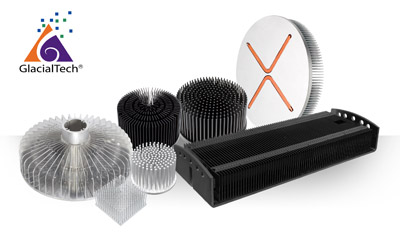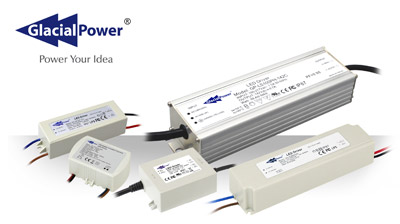Thanks to the rapid development of the integrated circuit (IC) and the remarkable progress made by the semi-conductor process technology over the last decades, computers and various electronic products are becoming more and more compact while their functions are becoming more powerful. The same development mode is also mirrored in the LED lighting industry. With the semi-conductor process technology, the LED lighting industry has made a swift advance and growth in the last few years. The Lumen (Im)/watt generated by the LED chip increases continuously. The Lumen generated per unit area is also getting higher. LED encapsulation plants are also making efforts in increasing the luminous flux intensity and the luminous performance (Im/W) of each Chip on Board (CoB), which makes the designing of LED lighting products become simpler.
Except for a few special lighting applications, more and more lighting products can be designed by using a single or a couple of CoBs. Continuous upward integration of the luminous modules not only lowers the threshold of product design but also reduces overall material costs for production. This also shortens the product design time and allows the design of LED lighting products to shift from technology-oriented to assembly-oriented. Consequently, the LED CoB is effectively locked in a thermal module. By selecting a suitable power driver, the design of the LED lighting main body is then completed.
Similar to the development history of the CPU of computer, the heat generated gets higher as the CPU operating speeds also get higher. Thanks to the development of the semi-conductor process technology, the heat generated can be lowered. Accordingly, the operating speed of the CPU can get higher, so does the heat generated. The LED lighting module also generates heat. Especially, to effectively and quickly dissipate the heat generated by a single CoB with high wattage becomes a critical issue for the luminous stability of a LED lighting product. 
The design of the cooling effect is intended not only to quickly dissipate the heat generated by the heat source but also dissipate the heat to the atmosphere through the overall thermal module. The thermal conductivity coefficient relates to the heat transfer speed. The design of a thermal module is a key to whether the cooling effect is good or not. When a thermal module is designed, the cooling performance, manufacturing cost, weight and volume must be taken into consideration. The thermal module will not be a good design if it is too heavy or too large, which will lead to cost increases in terms of the mechanism and packaging material design and will also indirectly affect the final transportation cost of a light fixture. A too heavy design is also a safety uncertainty when the product is installed in place. A different lighting module with a differently generated heat requires a different design of the cooling and manufacturing technology to achieve the optimum design combination. 
For different lighting applications and market segmentation, the same lighting module may need to go with a cheaper or a higher performance power driver. Some may need various requirements for the power driver, such as waterproof function, light-dimming or direct current input.
For some commercially available LED CoBs, GlacialTech has launched the thermal modules from 10W to hundreds of watts and power drivers for LED light fixture manufacturers to quickly design their products, which will significantly shorten the time before products can be launched. For more information about commercially available CoBs with GlacialTech thermal modules and GlacialPower power drivers, please visit the GlacialTech website.
|